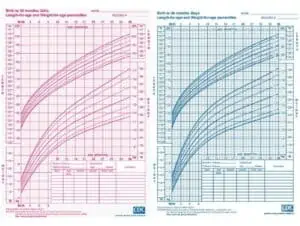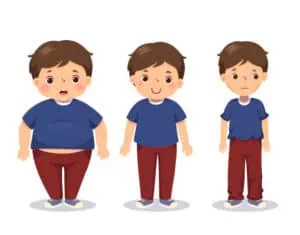
Growth and Development Monitoring: Is It Important?
What Is Growth and Development Monitoring? Is It Important?
Growth and development monitoring in children is where health professionals or physicians measure an infant or child’s weight, height, head circumference and overall growth to determine if their development is on the right track. Growth and development monitoring is important because if a child is growing too fast or slow, this could indicate either health or nutritional complications. With that, growth and development monitoring can also be done as a means to identify signs of potential developmental issues or delays earlier rather than later where the child can then receive the appropriate treatment to help improve their quality of life along with life skills.
Weight and Height/Length
In terms of measurements of body size, weight is the most used form of measurement as it is easy and most of the time accurate when it comes to weighing a child as it only requires standing or laying down. Secondly, height is another useful form of body measurement, especially in older children. When measuring height, older children are advised to be barefoot, keeping both heels on the ground with their back’s flat against the wall while facing forward. However, it might be a little more difficult when it comes to measuring infants as they are not able to stand yet. Therefore, their length is taken down by either simply using a measuring tape to measure the baby’s length or laying on a scale with the baby’s leg(s) fully extended and head against the top board for a more accurate reading.

Importance of Head Circumference
Furthermore, in infants, the head circumference is measured. Reason being it is easy to identify problems that could potentially affect the quality of their lives in the long run. For instance, if the baby’s head is growing quicker than normal, it might mean that the child could have macrocephaly, a condition where the baby’s head is larger than average or even hydrocephalus, a condition where there is a build-up of fluid in the brain that causes swelling.
However, if the baby’s head is smaller than expected, there is a possibility that the baby could have microcephaly, a type of birth defect where the baby’s brain fails to develop properly either during the gestation period or just after birth.

Due to the importance of growth and development monitoring, a child’s growth and development cannot just be determined by visiting a pediatrician just once. However, there is an alternative form of assessment to determine whether your child is growing normally if bringing them for a check-up cannot be done regularly, and that is by comparing the size of your child with other children of the same age and gender. If your child is about the same size as them, it is most likely your child is growing and developing perfectly normal.
In addition, the use of growth charts is a standard practice by health practitioners when bringing your child in for their regular check-up. These growth charts help with determining whether your child’s growth and development falls within the normal range by plotting their weight and height measurements on the chart. However, without knowing the child’s age and gender, this makes it difficult to determine if the child’s size is proportionate or not. By the age of 2, a child’s body mass index (BMI) can be calculated to estimate their body fat. Therefore, children who are thin have a lower weight for the height while fatter children have a higher weight for their height.

What are Growth Curves?
Additionally, growth curves of growth charts help to illustrate how much the child has grown over a certain period of time whether satisfactorily or poorly. Not only that, but growth curves can also help to identify any sort of sudden weight loss which can then be addressed as soon as possible. Growth curves can be created by having dots plotted on the chart once the child has made 2 or more visits to the doctor. These plotted dots are then joined by a line, creating a growth curve. With that, the best way of assessing a child’s growth and development is by looking at their overall growth curve over the past few months. Moreover, weight is a more important index of growth in younger children as poor weight gain or sudden weight loss are usually the first signs of malnutrition. Whereas height is a more important index of growth for older children.
Normally, during the first 6 months of a child’s life, their weight doubles, and by the time they turn one, it should be tripled (increased by three times). A baby’s weight and length grow the most exponentially during the first year of life and then gradually slows down until they reach puberty where they experience what is called a “growth spurt” only for a short period of time. However, there will also be instances where a child is either slightly heavier or lighter than other children of the same age. Children who are slightly heavier than most children are usually perfectly healthy. This could most likely be because of:
- Genetics
- Having tall parents
- Being large since birth
Children who are large for their age is considered normal upon general examination and should not be labelled as overweight based off their weight alone. However, if they weigh much heavier than most children their age, it could be that they are suffering from obesity. Children who are lighter than usual on the other hand are usually healthy and just rather smaller for their age. However, children who are much lighter than other children, especially those who live in poorer communities could mean they are either malnourished or suffering from an illness.

Puberty
Last but not least, puberty is a period in time where a child reaches a point of developing sexual maturation. It is a natural process for both girls between ages 10 and 14 and for boys between ages 12 and 16. By the age of 14 to 15 or couple years after their menstruation begins, females would usually stop growing and reach the height of an adult. Whereas for males, usually by the age of 16, they would stop growing but their muscles would continue growing.
Puberty does not only cause changes physically, but also mentally. At around age 10 and 11 years of age in girls, breasts are usually the first things to start developing. As they develop, it is normal for them to feel more tender. A growth spurt will then occur where girls are expected to grow additional 2-3 inches. A change in body shape will also take place. For instance, their hips will begin to widen. Most importantly, their external genitals and pubic hair will begin to grow. By the age 12 to 14 roughly two years after the development of breasts, underarm hair will begin to appear. Clear or white discharge will then begin to appear from the vagina followed by a period several months later.
Whereas for boys, at around 11 to 12 years of age, this is where their external genitals such as their penis, testes and scrotum begin to grow. Reassuring your child that it is perfectly normal if one testis grows faster than the other and that not all testes are of the same size. Along with that, this is where their pubic hair begins to grow much thicker and darker. In addition, at around 12 to 14 years, the most prominent part of their development is a growth spurt. This is where they begin to grow much taller while their chest and shoulders grow broader too. Normally, boys will grow an additional 10-30 cm and will usually stop growing by the age of 18 to 20 years old. Not only that but is it also very common for boys to experience minor development of their breasts. Despite it being normal, it is always a good idea to reassure your child if they ever get worried.
However, if the growing seems unusual and does not seem to stop, it is advised to seek medical attention by seeing a doctor. By 13 to 15 years of age, hair will begin to grow on various parts of the body such as their underarms, chest, legs, and face. Hormones such as testosterone is produced which helps with the production of sperm. Your child will also begin experiencing what is called an “erection” and “ejaculation”. It is also good to let your child know that erections can also happen randomly for no reason. Last but not least, at around 14 to 15 years of age, this is where the larynx (“Adam’s apple” or voice box) begins to appear more visible. As the larynx grows larger, this is where the voice “breaks” causing it to sound deeper.
